Skate Embaire
Embedding tradition in modern materials, modern music, and a modern context

Project description:
I built an embaire, a type of Ugandan xylophone, in collaboration with Sam Karugu (Bandcamp, Insta) and Basile Huguenin-Virchaux (YouTube, Insta) as part of Kilele 2025. Building upon Sammy and Basile's previous research on embaire tuning, this project gave that tuning system a physical presence and purpose by turning it into an instrument.
Role:
Instrument fabrication; embedded sensor implementation; C++ development; performer
Introduction
In 2025 I was invited to be part of a project for Kilele Summit, building and implementing the sensing and signal processing for an embaire. An embaire is a traditional xylophone-like instrument from Uganda, and I was immediately taken by it when I learned about it; it's huge, is played by many people at the same time, and is set over a hole in the ground used as a resonator.
For this project Sam and Basile had already done considerable research on the tuning system used by the embaire, drawing on historical scholarly texts from the early to mid 20th century. Basile had implemented the tuning system in a Pure Data patch, and my job was to create some physical version of it using sensors, embedded hardware, and a build that I would have to figure out when I got there.
The result was a large-scale instrument that took three people to play, and is rooted in the place where it was created and the people that surround it.
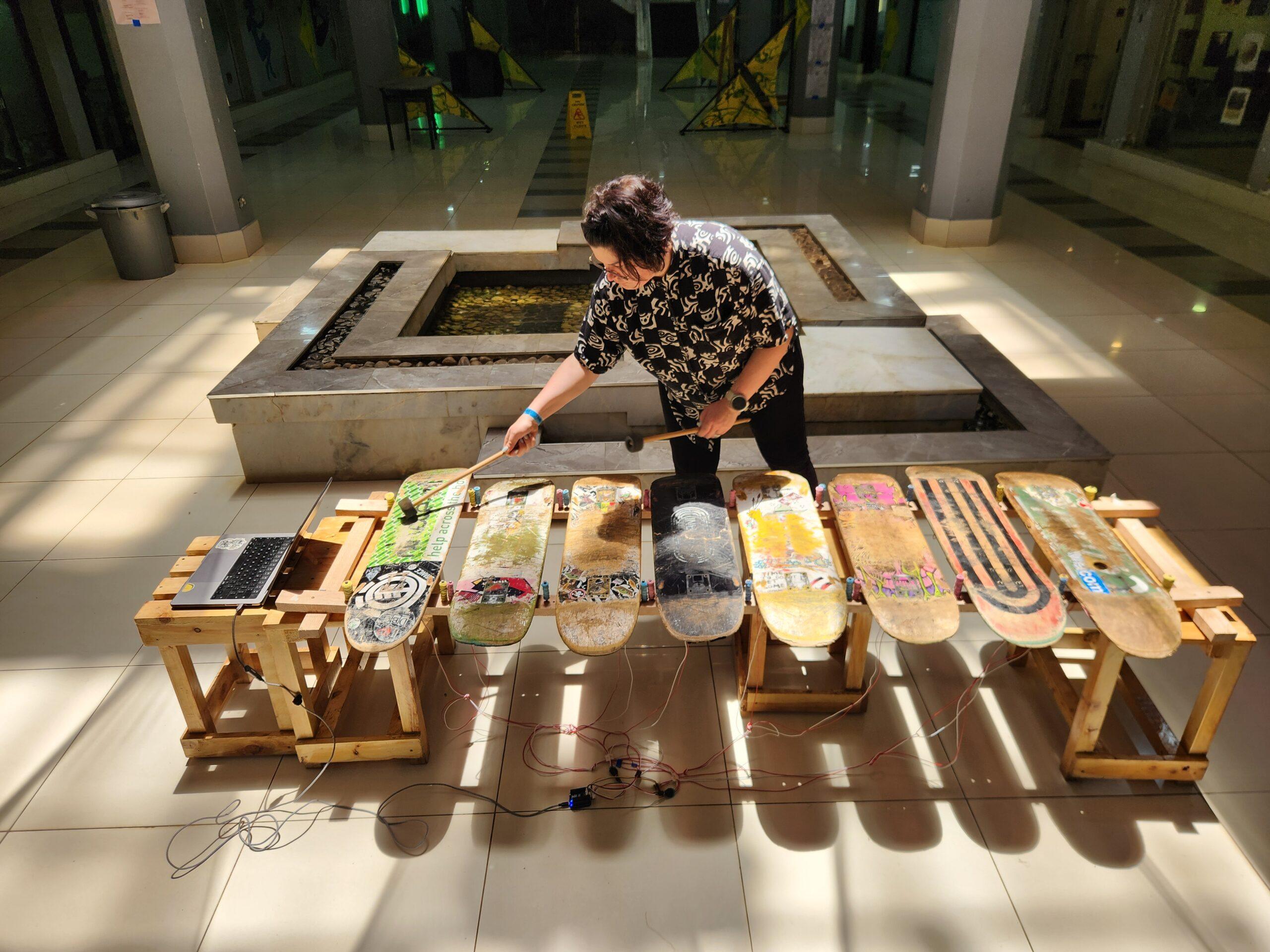
Skateboarding as design inspiration
When I arrived in Nairobi we immediately got to work in the Kilele Instrument Makers Lab. The Kilele Summit takes place in a place called The Mall in central Nairobi. The Mall was the first mall in Kenya, and these days the host organisation, Santuri East Africa, has turned The Mall's basement into a thriving hub of electronic music creation, education, and performance, including meeting spaces, classrooms, a recording studio, and a nightclub. The Kilele Summit takes place in and around The Mall every year, and in 2025 this included an Instrument Makers Lab where we would work and collaborate with other artists over the course of the summit.
Basile arrived with a Pure Data patch that implemented the tuning system, and all it needed was some small adjustments. The larger question was how to play this patch with a physical assemblage that worked like an embaire but was specific to this use and context - we needed materials for the embaire's keys, or lamellas, but the material had to be playable with mallets as well as reflective of the context.
The roof of the Mall is an open concrete space, and Sammy pointed out that the Skate Society of Kenya practiced up there. We approached them for their broken and discarded skateboards, and managed to salvage eight of them. They were perfect: the right size, a bit resonant, and hitting them would produce a good signal response. We also salvaged some old skateboard wheels to use for mallets.
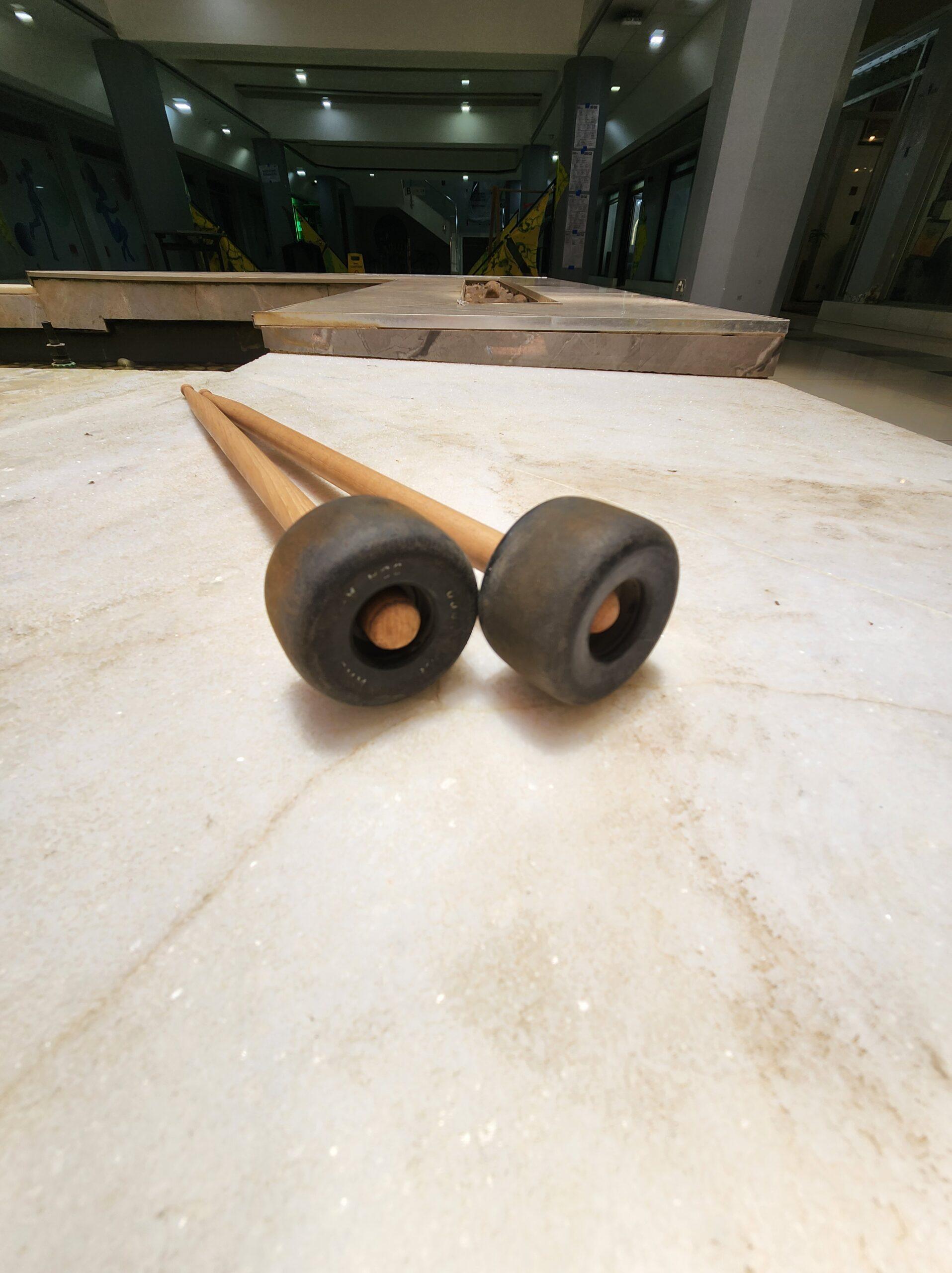
Mallets made of skateboard wheels
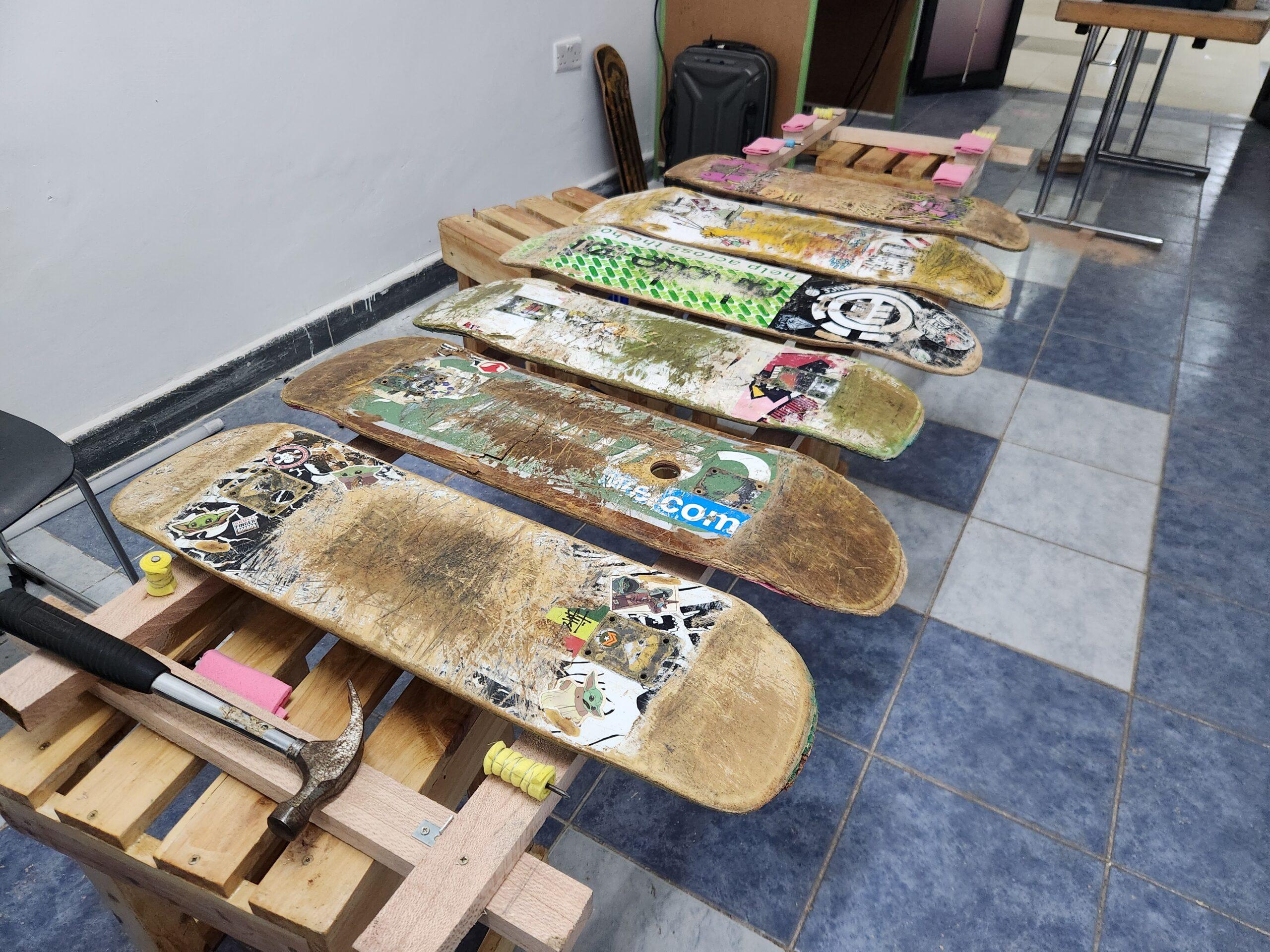
Early stages of the build, with skateboards in place
Buliding the sensing systems
After building a rack and system of holding the skateboard lamellas in place, I had to figure out how to bring them alive with embedded sensing.
I built a network of piezo sensors on each skateboard to sense and collect signal produced by hitting them. Each of these eight channels of sensing was fed into a Bela Mini Multichannel system, where all eight channels were treated as audio input. This meant that I could adjust the gain on each to control how sensitive they were, perform sophisticated filtering to reject high-frequency noise, and process the resulting data in real time. When the system sensed a strike on a lamelle it would do analysis to find out how hard it was hit, and then send a MIDI value reflecting this velocity to the laptop where the Pure Data patch was running. The Pure Data patch then produced a note at a volume that was reflective of how hard the lamella was hit, at the pitch for that lamella in the tuning system.
The Bela Mini was especially capable for this, because it can do multichannel audio processing with very little latency. This means that there's no noticeable lag between when you hit a lamella and when a sound is produced, making it feel natural and elegant, and not like a clunky digital system.
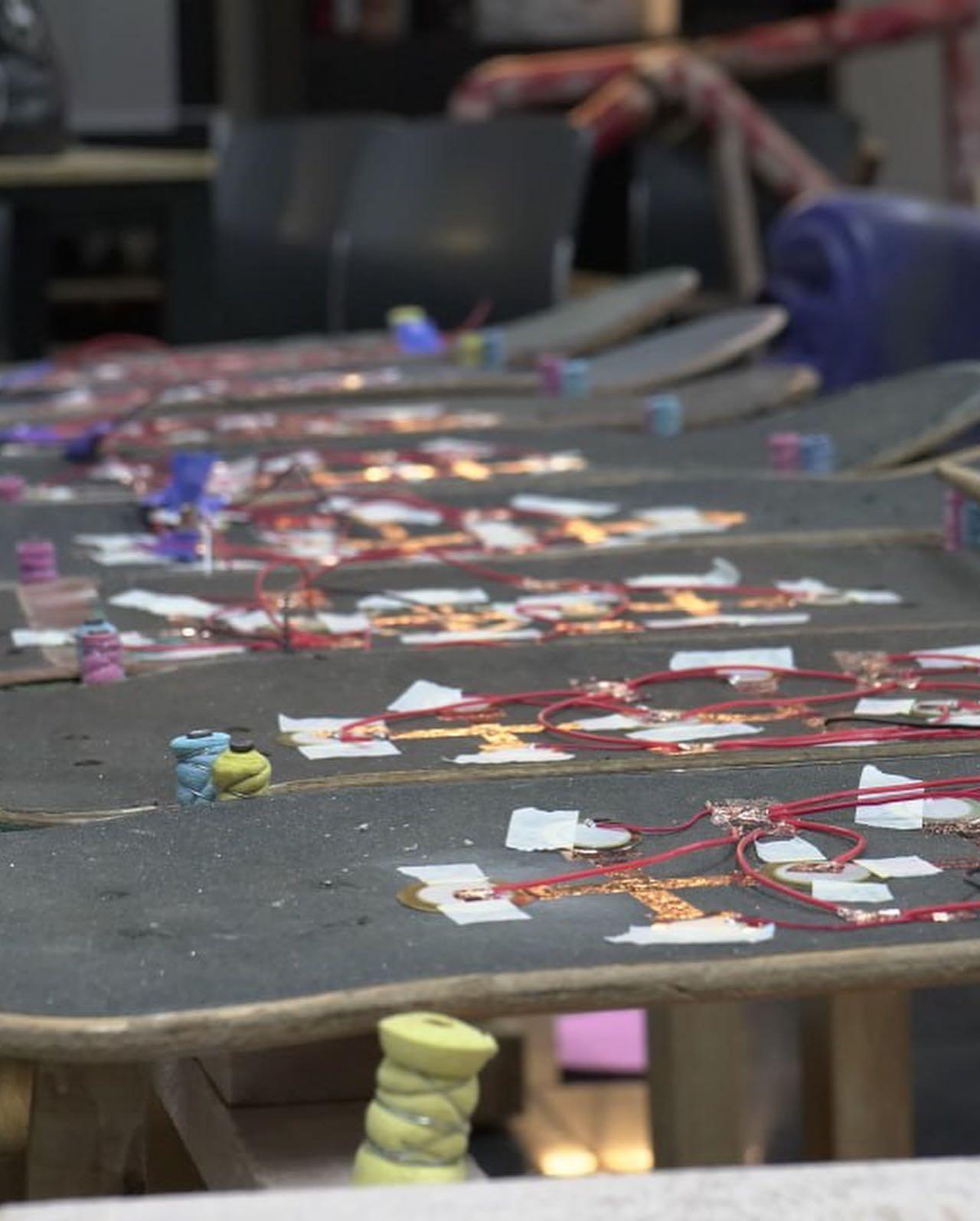
Building the piezo networks and setting them in place
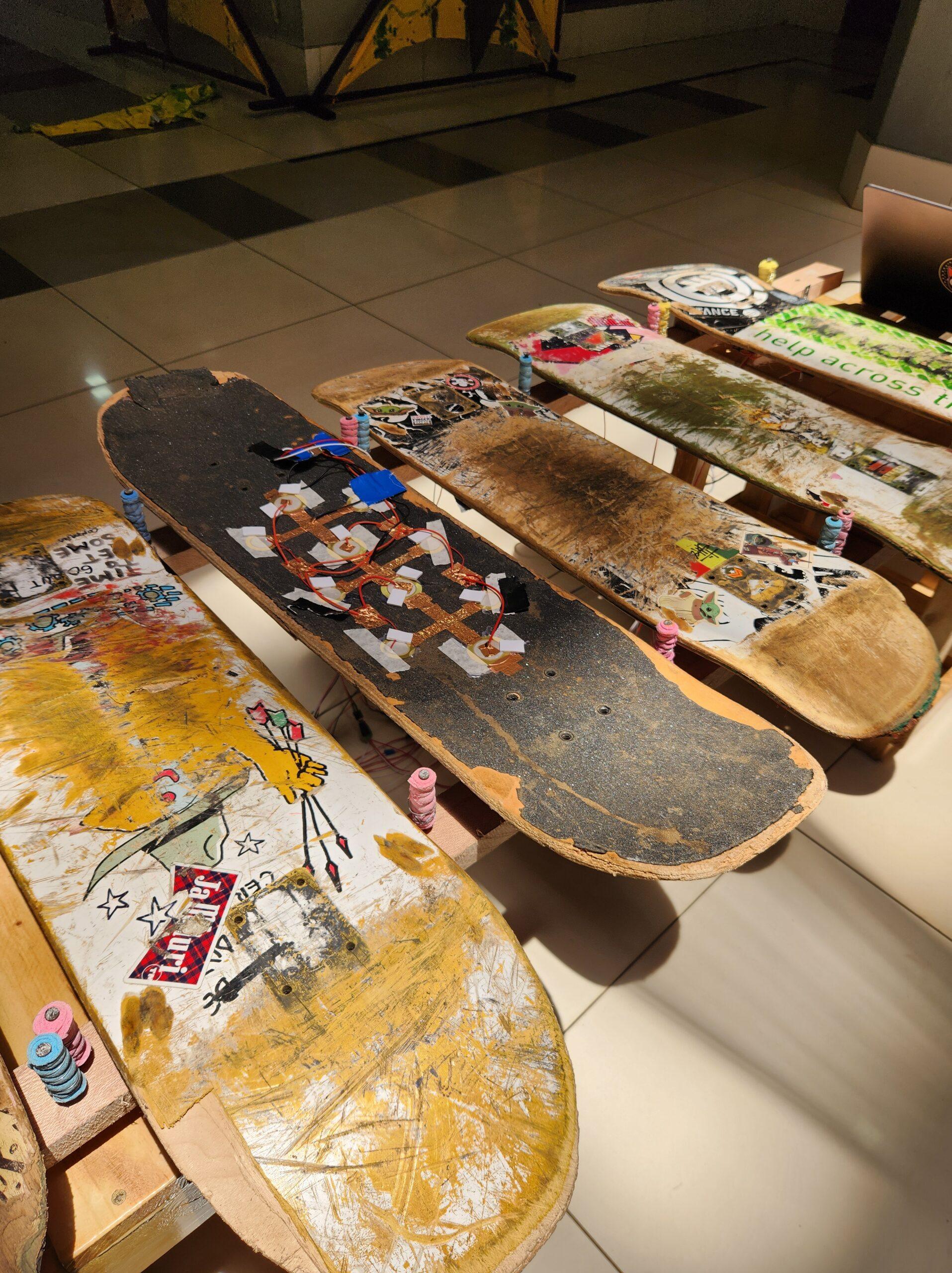
One of the channels of sensing on a skateboard
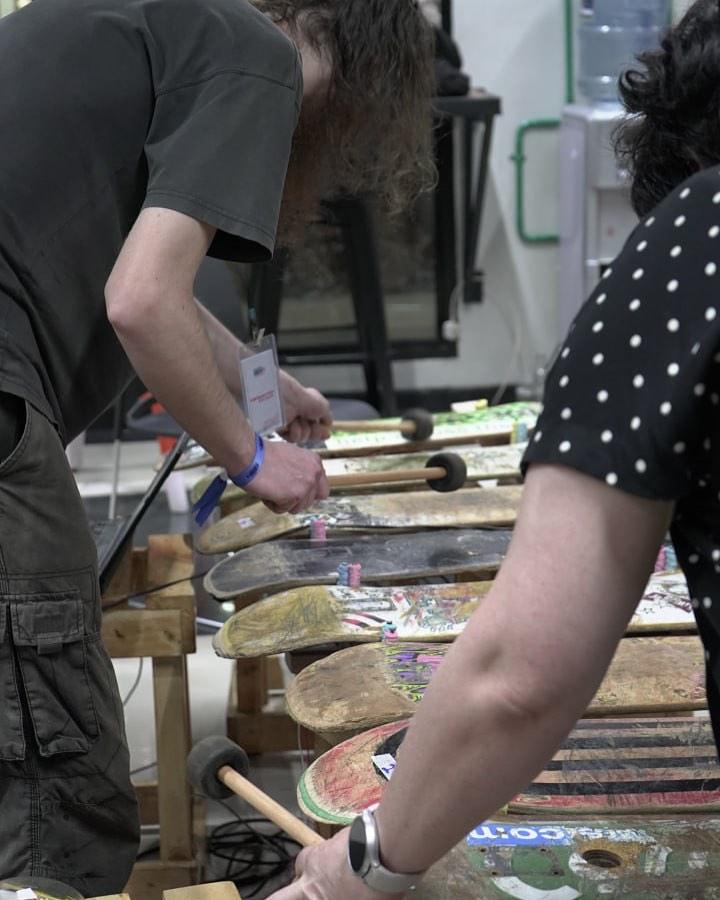
Basile and I testing sensor response
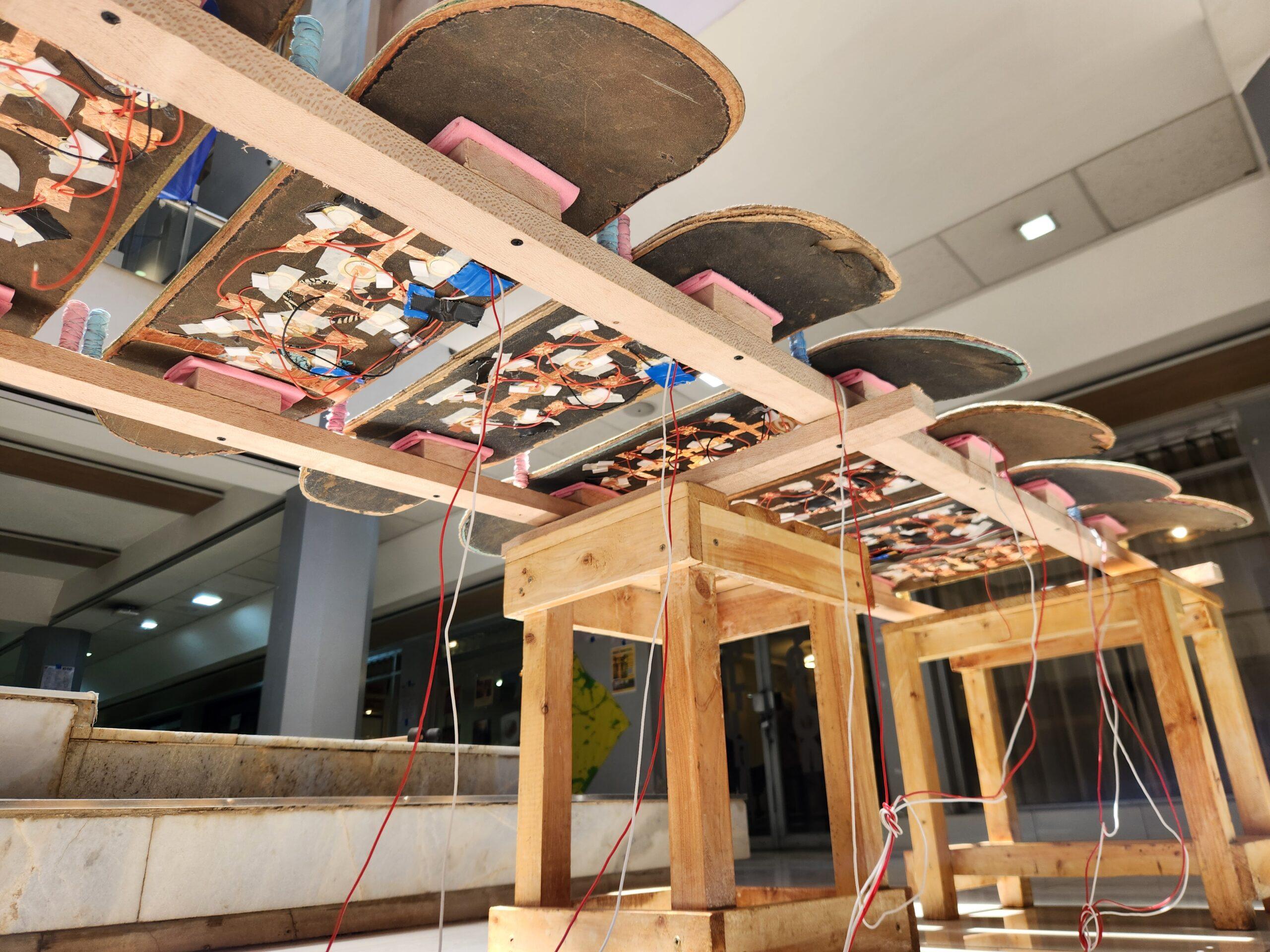
Underside of the lamellas, showing the custom sensing networks
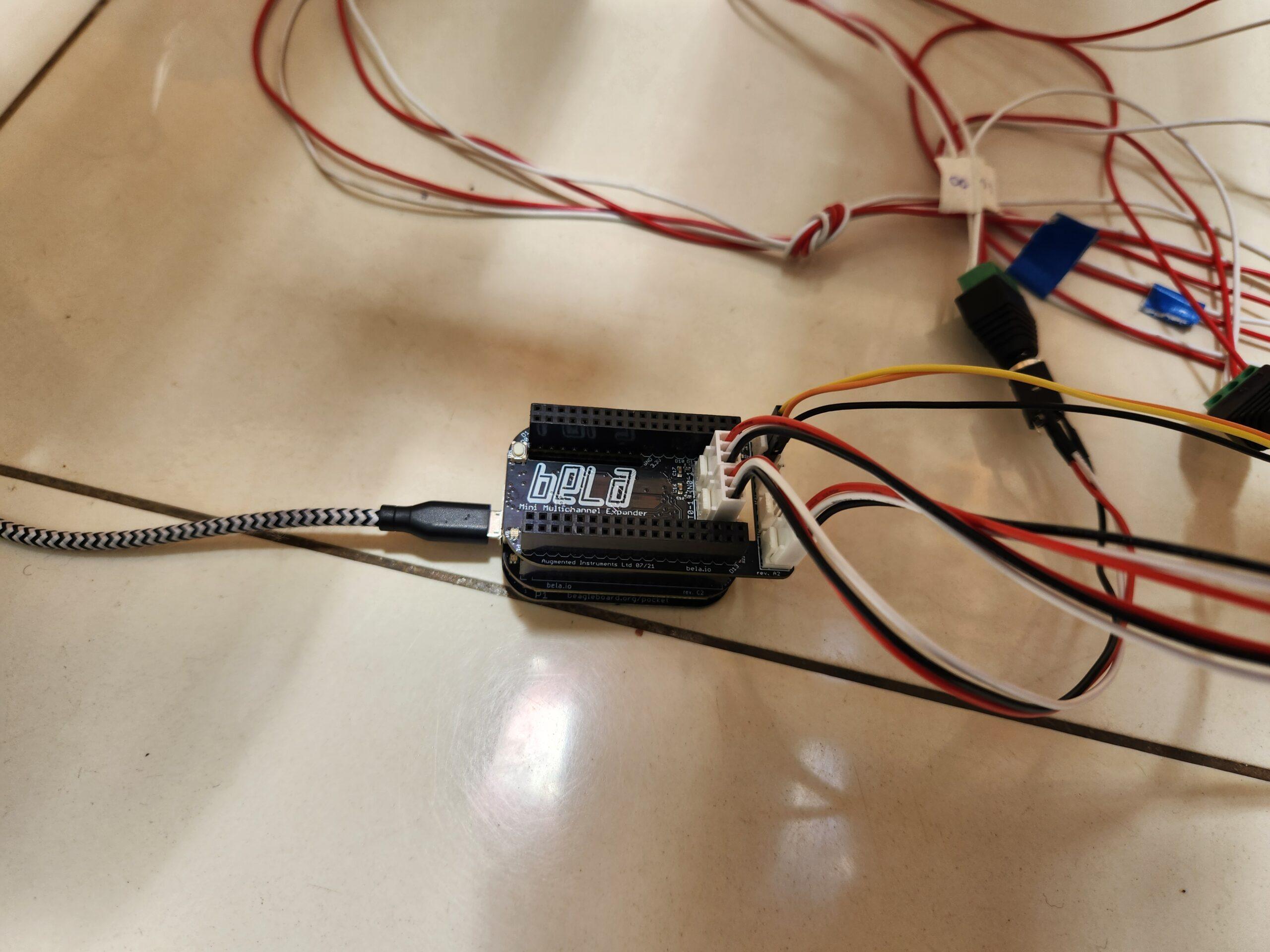
Eight channels of sensor data connected to a Bela Mini, which filtered and processed this data at audio rate and in real time
Performing it
We performed the embaire at Kilele, with Sammy and I on percussion and Basile controlling the Pure Data patch.
One of the most interesting aspects was that controlling the patch was an active part of performing this instrument. Basile could alter the tuning system in real time, bend pitches, and apply effects, meaning that while Sammy and I were choosing which notes were hit and how they were struck there was plenty of performance potential in how those sounds were produced. This took the embaire from a digital reproduction of a traditional instrument and introduced a new contemporary digital dimension.

The Skate Embaire being performed at The Mist as part of Kilele 2025
Thanks
Thanks to Sammy and Basile for being the very best collaborators, and to ProHelvetia for providing the funding for us to work together. Thank you also to Santuri East Africa for giving this project a venue at Kilele 2025. Most especially, thank you to all the Kilele organisers, staff and technicians who make this amazing festival possible: David Tinning, Bernt Isaak, Maria Bauer among so many others, and thank you especially Kamina Muindi for managing the Instrument Makers Lab with such skill, kindness and patience.
See More